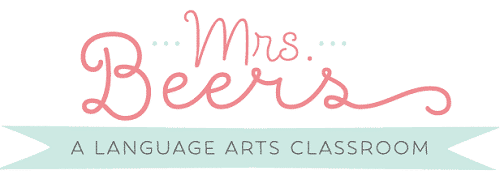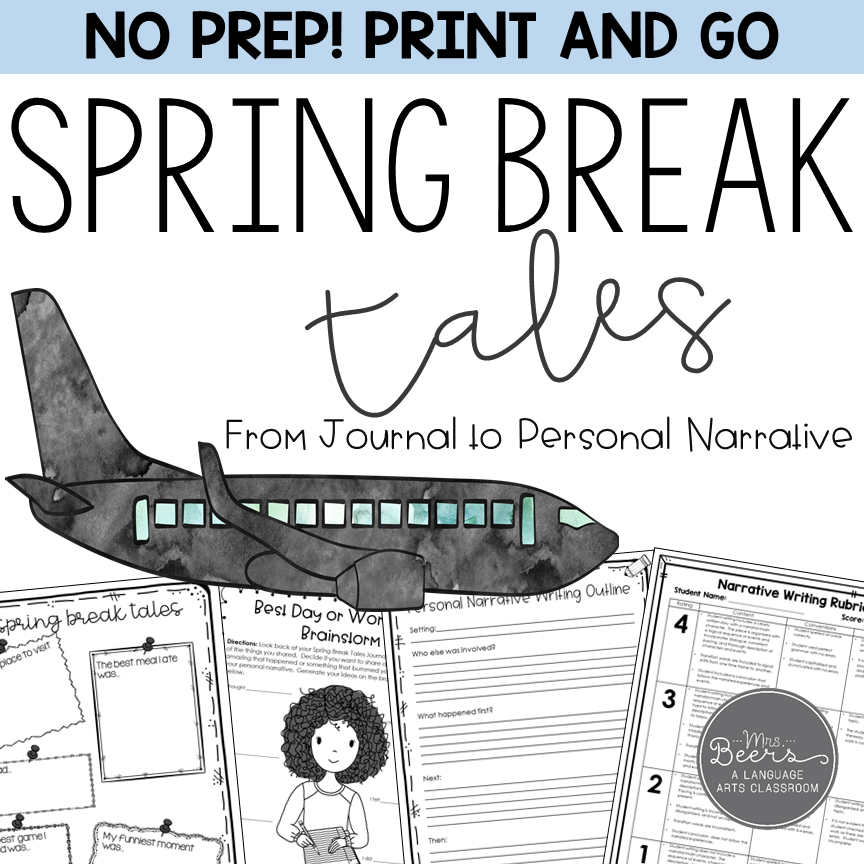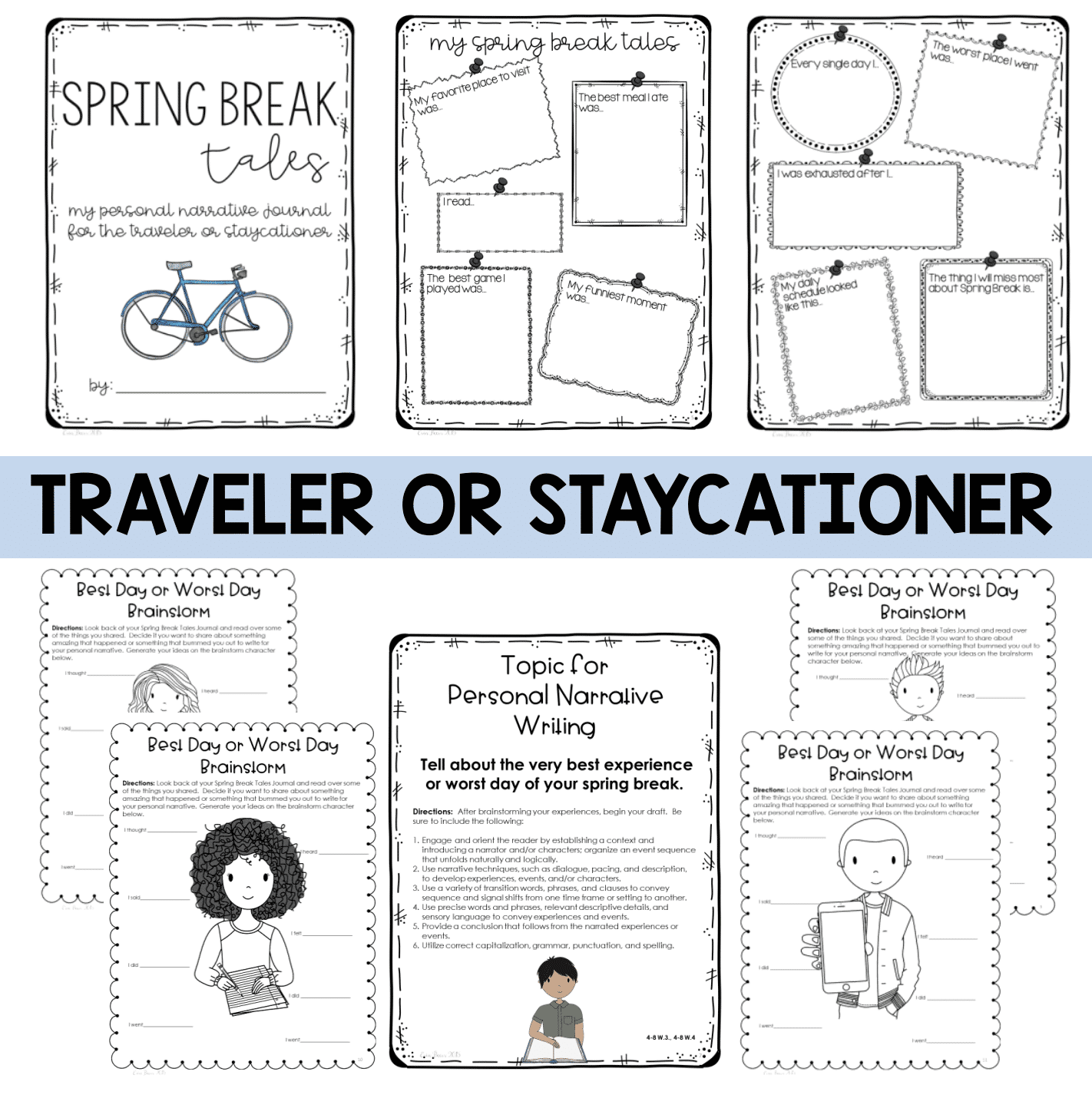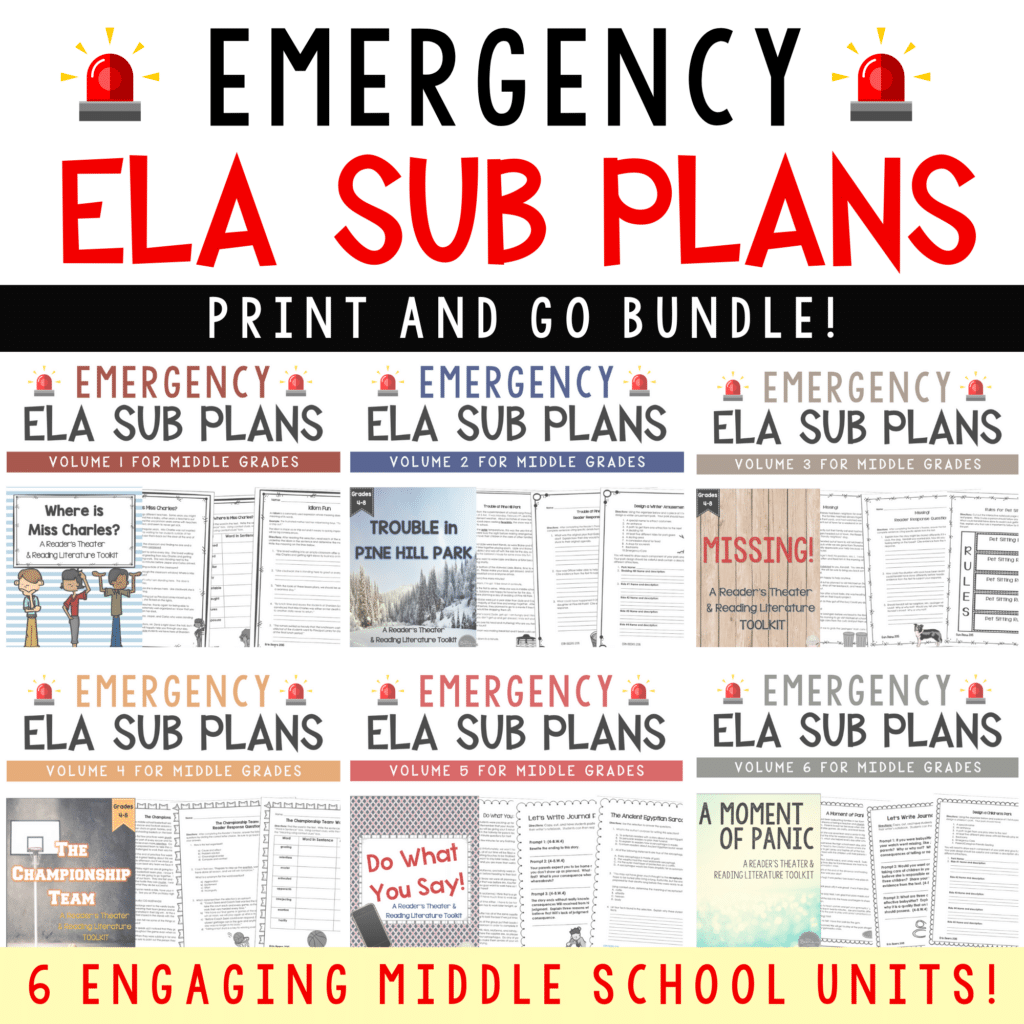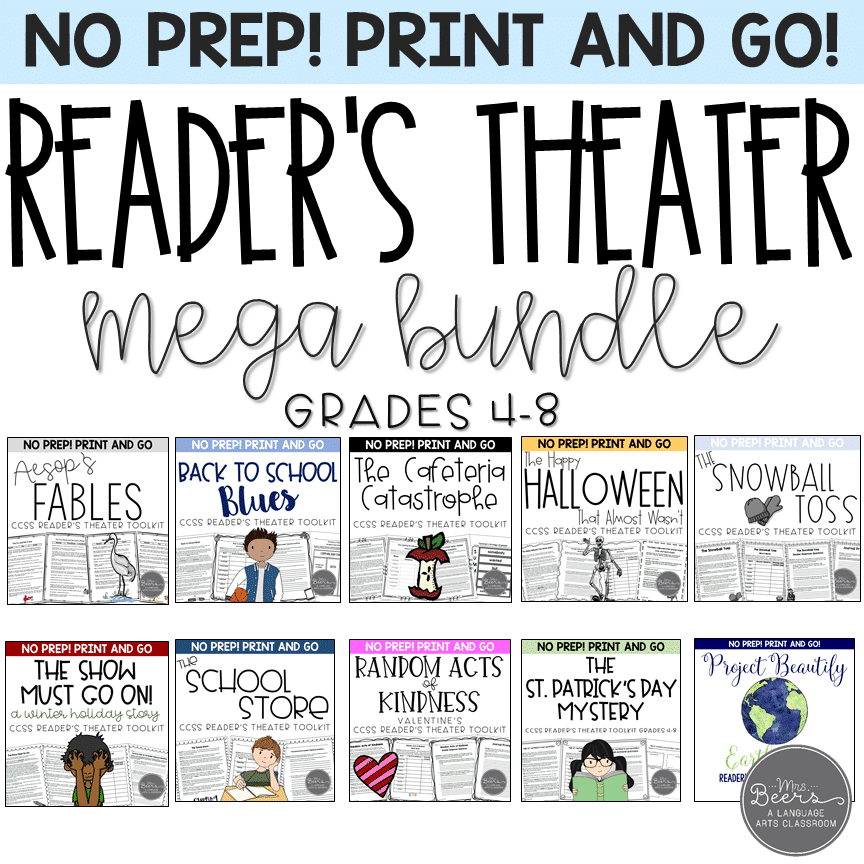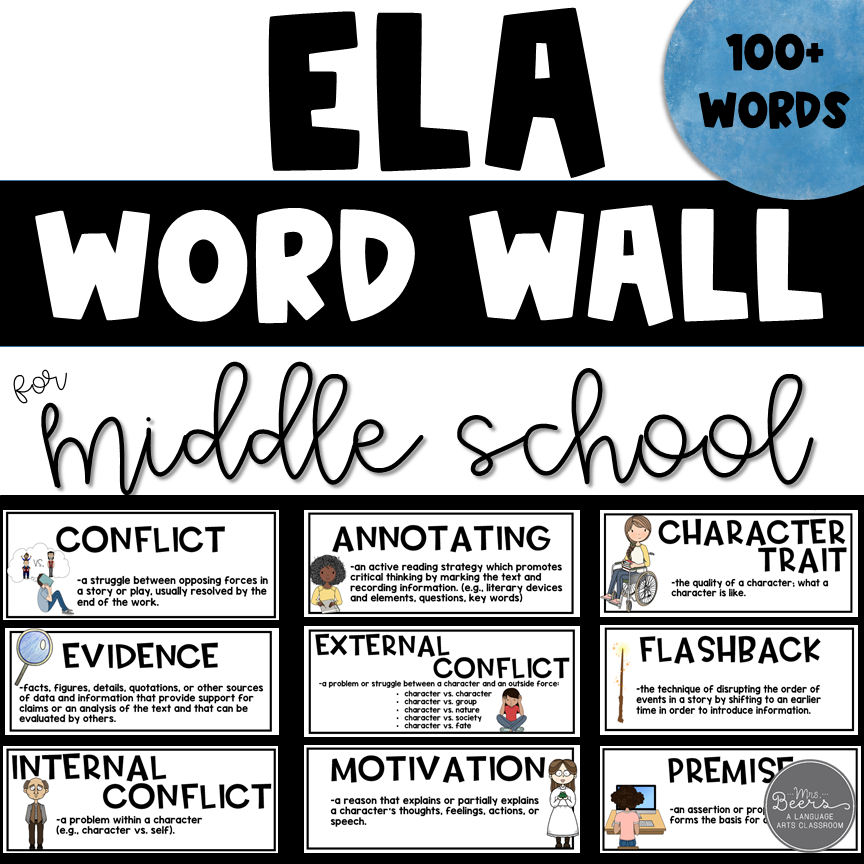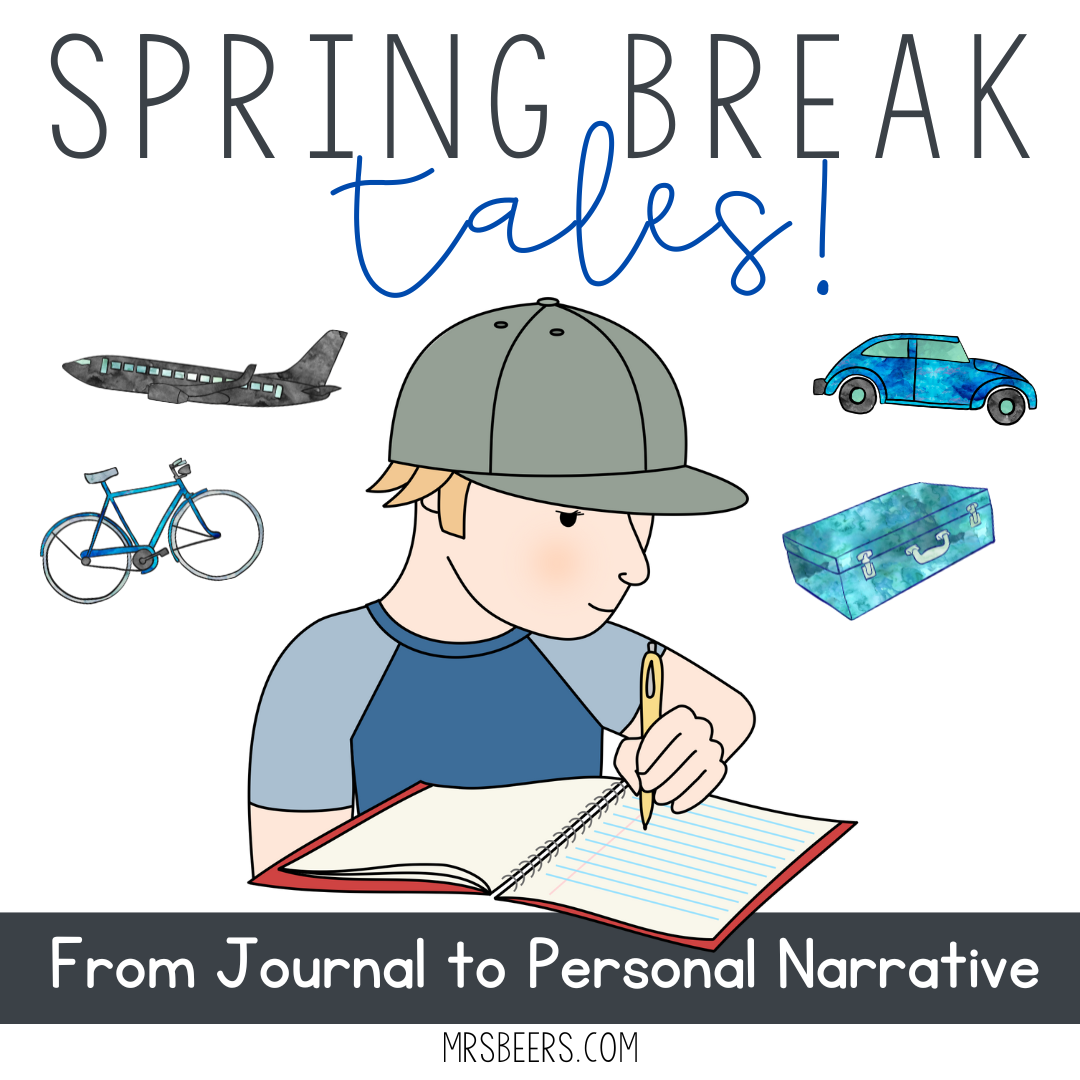
Spring break not only gives students and teachers a chance to refresh before the last quarter of the school year, but it also offers a fun backdrop to teach personal narrative essay writing. Coming back from break, my middle school students often need a nudge back to “learning mode,” so I like to use spring break journal prompts as brainstorm activities for a personal narrative writing lesson.
When I taught 6th grade in an urban setting, my students didn’t tend to travel anywhere for spring break. However, they always had a bazillion stories to share about how they spent their days away from school. I love this energy and willingness to share, but with state testing on the horizon, we need to maximize our instructional time with purposeful learning.
Motivating young writers often requires some creativity and motivation. When you get students bursting with stories about their spring break adventures, you must seize the moment! This is exactly why I created this spring break journal prompt and personal narrative writing resource.
Whether your students go to the beach or opt to stay home, they always have great stories to share with the class. This resource provides all the tools you need to get them excited about writing on the first days back from break. From brainstorming and idea worksheets, to writing prompts and outline templates, I created this resource to be engaging and easy to implement.
You can make this resource as elaborate or as minimal as you see fit. This can be utilized as a full-blown personal narrative essay resource by progressing through the journal prompts, brainstorm organizer, writing outline worksheet, and rubrics. You could also break the resource up into parts to utilize as a morning work resource for students to complete upon their return. Check it out. I promise your students will have a lot of fun reflecting.
I have included a rubric in this unit to help you communicate expectations with students. Here are some things to look for in personal narrative writing…
- Student writing includes a clearly written story with a narrator/main character.
- The piece is organized with a logical sequence of events and incorporates dialogue, consistent pacing, and thorough description of characters and events.
- Transition words are included to signal shifts from one time frame to another.
- The student included a conclusion that follows the narrated experiences and events.
As a bonus, I recently added a digital version to this resource. It is offered as a Google Slides file that you can incorporate with Google Classroom. This gives you another option for use beyond the printable PDF file. Download the resource today at TPT for only $3.75.
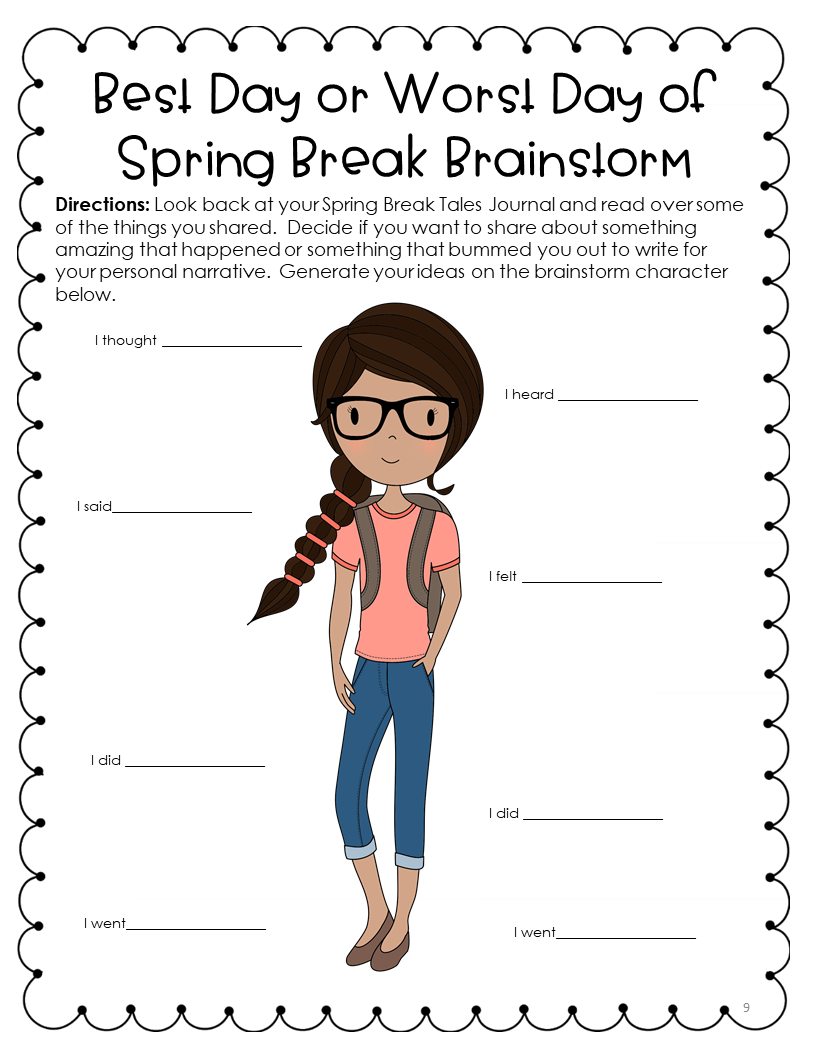
As a teacher, this is a great resource to help students transition back from spring break. It is a fun way for students to write out their thoughts and share the fun experiences from their spring break.
Safe travels if you are heading off on your own spring break adventure!
